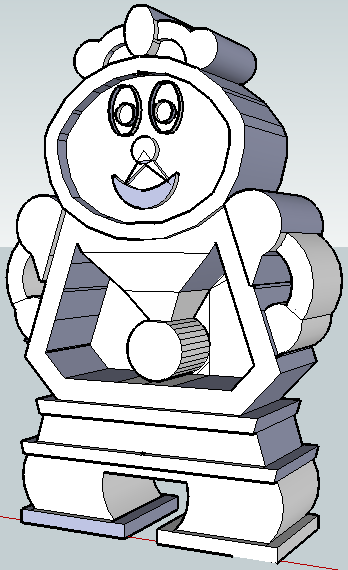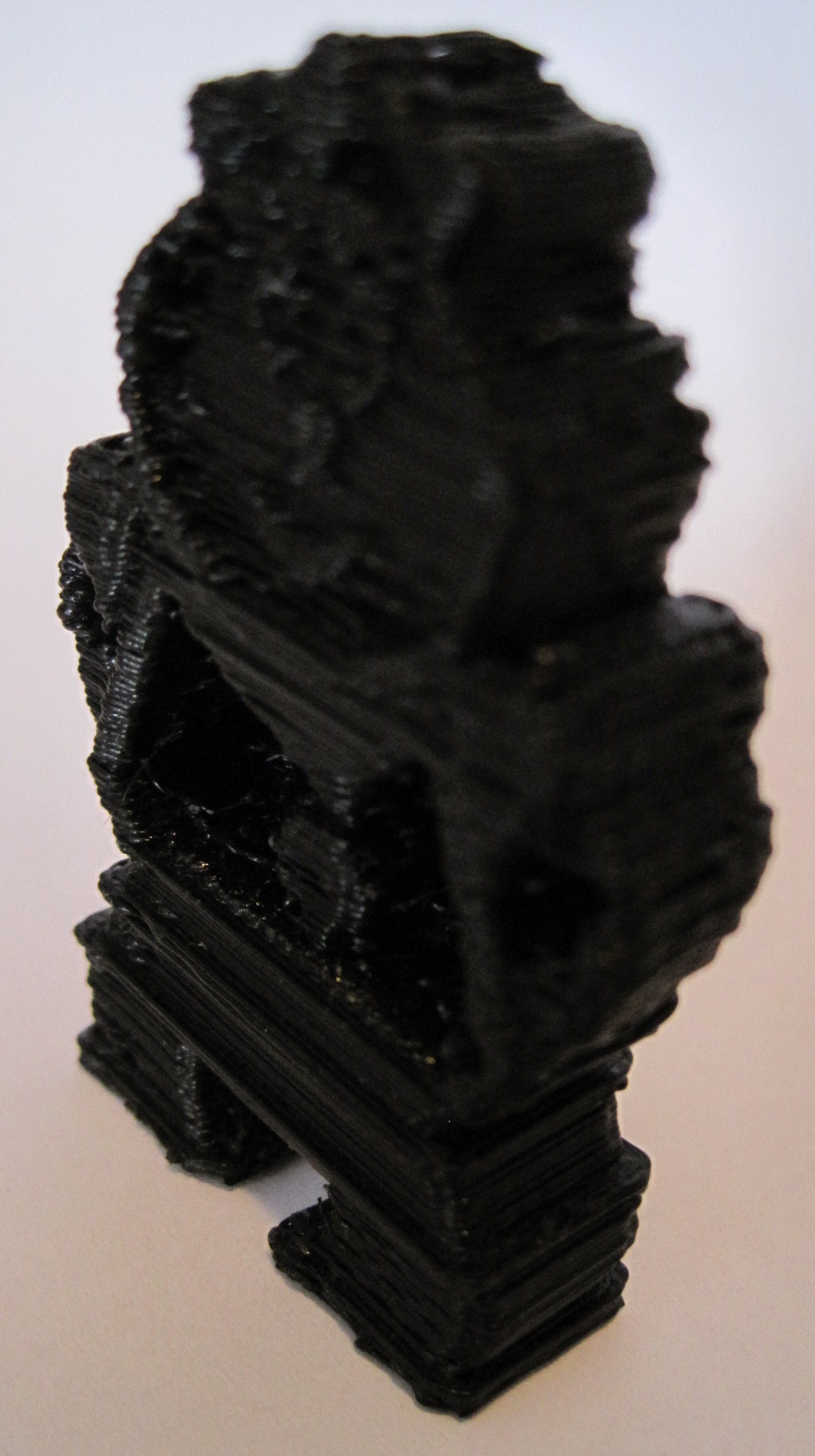
You know, with a Bloom Box, a MakerBot, and enough plastic and time I could go completely off the grid.
Away from the things of man.
I designed this in Sketchup, exported to STL, Skienforged to gcode, RepG’d to an S3G file, and printed. The feature I’m the most proud of is the pendulum inside his chest.


The design needs to be tweaked a little since parts of him have too much plastic and a few parts have too little. But, overall I’m quite happy with the result.

Freaking cool. This robot was designed by jrombosky by taking the measurements/proportions/ratios from Leonardo DaVinci’s Virtuvian Man. Even if these proportions were all messed up, this would still be super awesome. It’s a little printable robot!!!

It reminds me of a lego set from a few years ago:
Update 4/21/2011: This post is more than a year old. Since then I’ve created ProfileMaker which should eliminate the need for almost all of these steps. Share and enjoy!
A MakerBot Operators group member, Cliff Biffle, has posted a very comprehensive list his Skeinforge tuning and calibration procedure. Cliff owns MakerBot #69 from Batch#4, named Kallisti. Although Cliff has a MakerBot Skeinforge tuning page, it looks like he hasn’t had a chance to transcribe his lab notebook yet. However, Cliff has been patient enough to type up his Skeinforge calibration information twice for the benefit of the MakerBot Operators group. Here are links to his original postings on 1/6/2010 and another on 1/15/2010.
The other day I wanted to go back and find his calibration procedure, but had forgotten who had posted it, when it was posted, and which thread it was posted. Having now found it, I don’t want to lose it again. It turns out that Cliff had posted it once in response to my own question about dialing in Skeinforge settings in order to print up lego pieces! Thanks Cliff!
I’ve mashed his two posts together to put together this checklist: